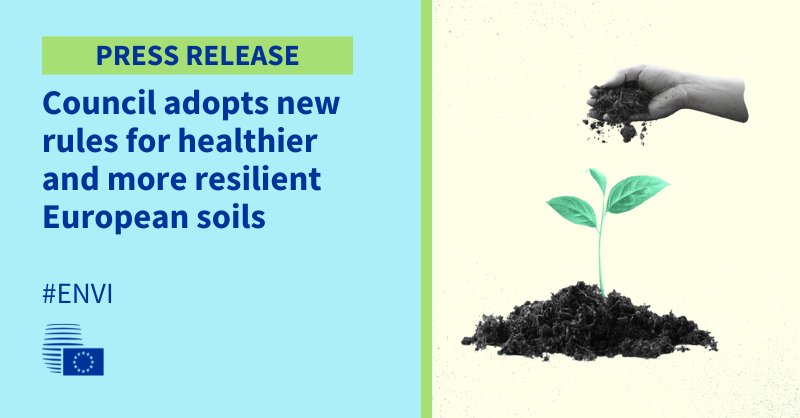The Council of the European Union has formally adopted the Soil Monitoring Directive, establishing the first-ever EU-wide framework for assessing and monitoring soils. The overarching goal is ambitious: to achieve healthy soils across Europe by 2050.
This directive represents a major step forward in strengthening soil resilience, which is vital for food security, clean water, biodiversity, and environmental protection.
Key elements of the directive
- Creation of national monitoring systems, based on a common EU methodology, to assess the physical, chemical, and biological condition of soils.
- Improved management of contaminated sites and the introduction of land-take mitigation principles, focusing on soil sealing (covering soil with impermeable materials such as concrete or asphalt) and soil removal (loss of topsoil through construction activities).
- Enhanced monitoring of emerging pollutants, including PFAS, pesticides, and microplastics.
- Definition of common soil descriptors and soil health classes, linked to EU-level non-binding target values and national trigger values, to guide priorities and actions.
- Support from the European Commission through the development of common tools and methodologies, and the facilitation of best practice exchange between Member States.
Next steps
This adoption by the Council marks a decisive milestone, with the final vote in the European Parliament expected in the coming weeks. Member States will then have three years to transpose the directive into national law.
Background
Currently, more than 60% of European soils are in poor condition, due to unsustainable land use, contamination, overexploitation, and the impacts of climate change and extreme weather events. Unlike water or air, soils have so far lacked a dedicated legislative framework at EU level. The EU Soil Strategy, launched in 2021 as part of the EU Biodiversity Strategy for 2030, had already highlighted this gap as a key driver of soil degradation. The new directive, first proposed in July 2023, now provides the legal foundation for coordinated action to protect and restore Europe’s soils.

